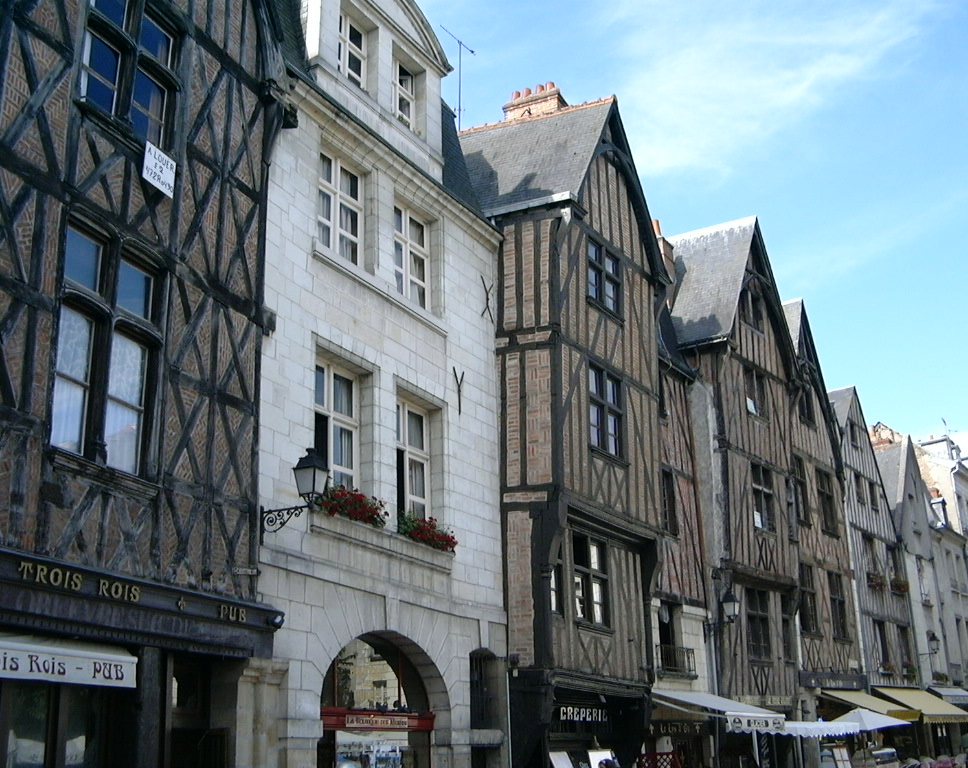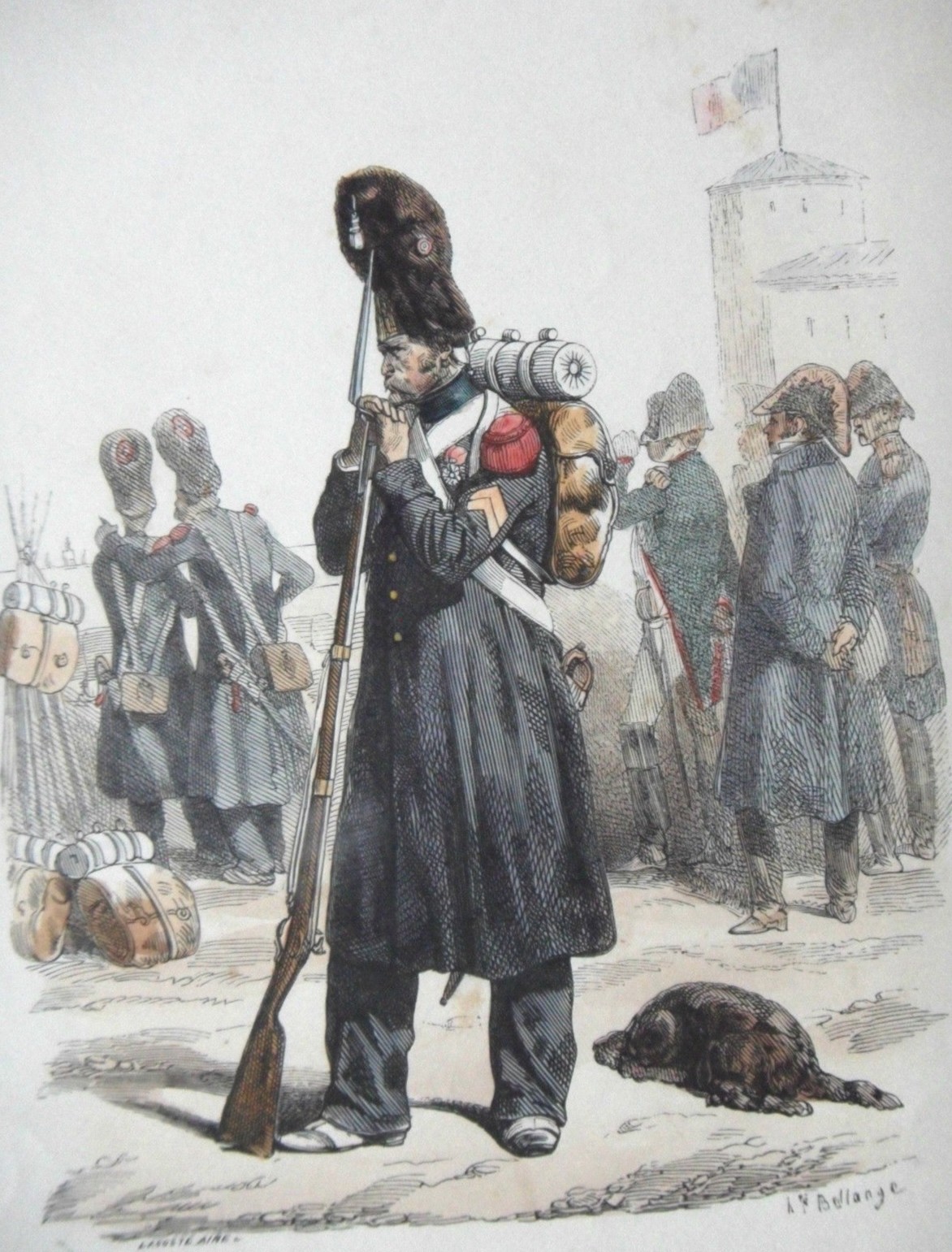|
Philippe Antoine D'Ornano (R
Philippe Antoine d'Ornano, 1st Comte d'Ornano (January 17, 1784 – October 13, 1863) was a French soldier and political figure who rose to the rank of Marshal of France. He was made ''Count d'Ornano of the French Empire'' in 1808. Early life D'Ornano was born in Ajaccio, Corsica on January 17, 1784. He was a son of Lodovico Antonio d'Ornano and Isabella Maria Buonaparte. His paternal grandparents were Filippo Antonio d'Ornano and the former Maria Geronima Maggioco. His maternal grandparents were the former Maria Rosa da Bozzi and Napoleone Buonaparte, making him a second cousin of Napoleon Bonaparte. Career D'Ornano served in Italy during the French Revolutionary Wars (in 1798 and 1799), and later took part in the expedition to Saint-Domingue. He served in the campaigns of the Napoleonic Wars from 1805 on. He commanded the 5th Dragoon regiment during the battle of Fuentes de Oñoro, after a brave attack of cavalry, he was promoted to brigadier general. He returned to France a ... [...More Info...] [...Related Items...] OR: [Wikipedia] [Google] [Baidu] |
Ajaccio
Ajaccio (, , ; French: ; it, Aiaccio or ; co, Aiacciu , locally: ; la, Adiacium) is a French commune, prefecture of the department of Corse-du-Sud, and head office of the '' Collectivité territoriale de Corse'' (capital city of Corsica). It is also the largest settlement on the island. Ajaccio is located on the west coast of the island of Corsica, southeast of Marseille. The original city went into decline in the Middle Ages, but began to prosper again after the Genoese built a citadel in 1492, to the south of the earlier settlement. After the Corsican Republic was declared in 1755, the Genoese continued to hold several citadels, including Ajaccio, until the French took control of the island. The inhabitants of the commune are known as ''Ajacciens'' (men) or ''Ajacciennes'' (women). The most famous of these is Napoleon Bonaparte, who was born in Ajaccio in 1769, and whose ancestral home, the Maison Bonaparte, is now a museum. Other dedications to him in the city i ... [...More Info...] [...Related Items...] OR: [Wikipedia] [Google] [Baidu] |
Dragoon
Dragoons were originally a class of mounted infantry, who used horses for mobility, but dismounted to fight on foot. From the early 17th century onward, dragoons were increasingly also employed as conventional cavalry and trained for combat with swords and firearms from horseback. While their use goes back to the late 16th century, dragoon regiments were established in most European armies during the 17th and early 18th centuries; they provided greater mobility than regular infantry but were far less expensive than cavalry. The name reputedly derives from a type of firearm, called a ''dragon'', which was a handgun version of a blunderbuss, carried by dragoons of the French Army. The title has been retained in modern times by a number of armoured or ceremonial mounted regiments. Origins and name The establishment of dragoons evolved from the practice of sometimes transporting infantry by horse when speed of movement was needed. In 1552, Alexander Farnese, Duke of Parma mo ... [...More Info...] [...Related Items...] OR: [Wikipedia] [Google] [Baidu] |
Tours
Tours ( , ) is one of the largest cities in the region of Centre-Val de Loire, France. It is the prefecture of the department of Indre-et-Loire. The commune of Tours had 136,463 inhabitants as of 2018 while the population of the whole metropolitan area was 516,973. Tours sits on the lower reaches of the Loire, between Orléans and the Atlantic coast. Formerly named Caesarodunum by its founder, Roman Emperor Augustus, it possesses one of the largest amphitheaters of the Roman Empire, the Tours Amphitheatre. Known for the Battle of Tours in 732 AD, it is a National Sanctuary with connections to the Merovingians and the Carolingians, with the Capetians making the kingdom's currency the Livre tournois. Saint Martin, Gregory of Tours and Alcuin were all from Tours. Tours was once part of Touraine, a former province of France. Tours was the first city of the silk industry. It was wanted by Louis XI, royal capital under the Valois Kings with its Loire castles and c ... [...More Info...] [...Related Items...] OR: [Wikipedia] [Google] [Baidu] |
July Revolution
The French Revolution of 1830, also known as the July Revolution (french: révolution de Juillet), Second French Revolution, or ("Three Glorious ays), was a second French Revolution after the first in 1789. It led to the overthrow of King Charles X, the French Bourbon monarch, and the ascent of his cousin Louis Philippe, Duke of Orléans. After 18 precarious years on the throne, Louis-Philippe was overthrown in the French Revolution of 1848. The 1830 Revolution marked a shift from one constitutional monarchy, under the restored House of Bourbon, to another, the July Monarchy; the transition of power from the House of Bourbon to its cadet branch, the House of Orléans; and the replacement of the principle of hereditary right by that of popular sovereignty. Supporters of the Bourbons would be called Legitimists, and supporters of Louis Philippe were known as Orléanists. In addition, there continued to be Bonapartists supporting the return of Napoleon's descendants. ... [...More Info...] [...Related Items...] OR: [Wikipedia] [Google] [Baidu] |
École Spéciale Militaire De Saint-Cyr
The École spéciale militaire de Saint-Cyr (ESM, literally the "Special Military School of Saint-Cyr") is a French military academy, and is often referred to as Saint-Cyr (). It is located in Coëtquidan in Guer, Morbihan, Brittany. Its motto is ''Ils s'instruisent pour vaincre'', literally meaning "They study to vanquish" or, more freely put, "Training for victory". French cadet officers are called ''saint-cyriens'' or ''cyrards''. France's other most senior military education institute is the ''École de guerre'' (EdG) (School of Warfare), located in the '' École militaire'' complex, in Paris. French students who enter Saint-Cyr as cadets are about 21 years old, and undergo three years of training. All ESM cadets graduate with a Master of Arts or a Master of Science and are commissioned officers. The academy was founded in Fontainebleau in 1802 by Napoleon. It was moved in 1806 to the buildings of the former ''Maison Royale de Saint-Louis'', in Saint-Cyr-l'École, west o ... [...More Info...] [...Related Items...] OR: [Wikipedia] [Google] [Baidu] |
Bourbon Restoration In France
The Bourbon Restoration was the period of French history during which the House of Bourbon returned to power after the first fall of Napoleon on 3 May 1814. Briefly interrupted by the Hundred Days War in 1815, the Restoration lasted until the July Revolution of 26 July 1830. Louis XVIII and Charles X, brothers of the executed king Louis XVI, successively mounted the throne and instituted a conservative government intended to restore the proprieties, if not all the institutions, of the Ancien Régime. Exiled supporters of the monarchy returned to France but were unable to reverse most of the changes made by the French Revolution. Exhausted by decades of war, the nation experienced a period of internal and external peace, stable economic prosperity and the preliminaries of industrialization. Background Following the French Revolution (1789–1799), Napoleon Bonaparte became ruler of France. After years of expansion of his French Empire by successive military victories, a coa ... [...More Info...] [...Related Items...] OR: [Wikipedia] [Google] [Baidu] |
Elba
Elba ( it, isola d'Elba, ; la, Ilva) is a Mediterranean island in Tuscany, Italy, from the coastal town of Piombino on the Italian mainland, and the largest island of the Tuscan Archipelago. It is also part of the Arcipelago Toscano National Park, and the third largest island in Italy, after Sicily and Sardinia. It is located in the Tyrrhenian Sea about east of the French island of Corsica. The island is part of the province of Livorno and is divided into seven municipalities, with a total population of about 30,000 inhabitants which increases considerably during the summer. The municipalities are Portoferraio (which is also the island's principal town), Campo nell'Elba, Capoliveri, Marciana, Marciana Marina, Porto Azzurro, and Rio. Elba was the site of Napoleon's first exile, from 1814 to 1815. Geography Elba is the largest remaining stretch of land from the ancient tract that once connected the Italian peninsula to Corsica. The northern coast faces the Liguri ... [...More Info...] [...Related Items...] OR: [Wikipedia] [Google] [Baidu] |
Napoleon
Napoleon Bonaparte ; it, Napoleone Bonaparte, ; co, Napulione Buonaparte. (born Napoleone Buonaparte; 15 August 1769 – 5 May 1821), later known by his regnal name Napoleon I, was a French military commander and political leader who rose to prominence during the French Revolution and led successful campaigns during the Revolutionary Wars. He was the ''de facto'' leader of the French Republic as First Consul from 1799 to 1804, then Emperor of the French from 1804 until 1814 and again in 1815. Napoleon's political and cultural legacy endures to this day, as a highly celebrated and controversial leader. He initiated many liberal reforms that have persisted in society, and is considered one of the greatest military commanders in history. His wars and campaigns are studied by militaries all over the world. Between three and six million civilians and soldiers perished in what became known as the Napoleonic Wars. Napoleon was born on the island of Corsica, not long aft ... [...More Info...] [...Related Items...] OR: [Wikipedia] [Google] [Baidu] |
Imperial Guard (Napoleon I)
The Imperial Guard (French: ''Garde Impériale'') was originally a small group of elite soldiers of the French Army under the direct command of Napoleon I, but grew considerably over time. It acted as his bodyguard and tactical reserve, and he was careful of its use in battle. The Guard was divided into the staff, infantry, cavalry, and artillery regiments, as well as battalions of sappers and marines. The guard itself as a whole distinguished between the experienced veterans and less experienced members by being separated into three sections: the Old Guard, Middle Guard and Young Guard. History The Guard had its origin in the Consular Guard (''Garde des consuls''), created November 28, 1799, by the union of the Guard of the Directory (''Garde du Directoire exécutif'') and the Grenadiers of the Legislature (''Grenadiers près de la Représentation nationale''). These formations had for principal purpose the security of the executive and legislative branches of the French ... [...More Info...] [...Related Items...] OR: [Wikipedia] [Google] [Baidu] |
Jean-Baptiste Bessières
Jean-Baptiste Bessières (; 6 August 1768 – 1 May 1813), 1st Duke of Istria (''Duc d'Istrie''), was a French military commander and Marshal of the Empire who served during both the French Revolutionary Wars and the Napoleonic Wars. His younger brother, Bertrand, followed in his footsteps and eventually became a divisional general. Their cousin, Julien Bessières, also served Emperor Napoleon I as a diplomat and imperial official. Early life and career Bessières was born on 6 August 1768 in Prayssac, in the province of Quercy, to a bourgeois family. He was the eldest of eight children born to Mathurin Bessières, a physician, and Antoinette Lemozy. He attended school in the nearby city of Cahors. In 1792, during the French Revolution, Bessières was called to Paris to serve in the Constitutional Guard of King Louis XVI. Each department was required to send a certain number of young men to supply it, which were selected from families considered as still being loyal to the k ... [...More Info...] [...Related Items...] OR: [Wikipedia] [Google] [Baidu] |
.jpg)






